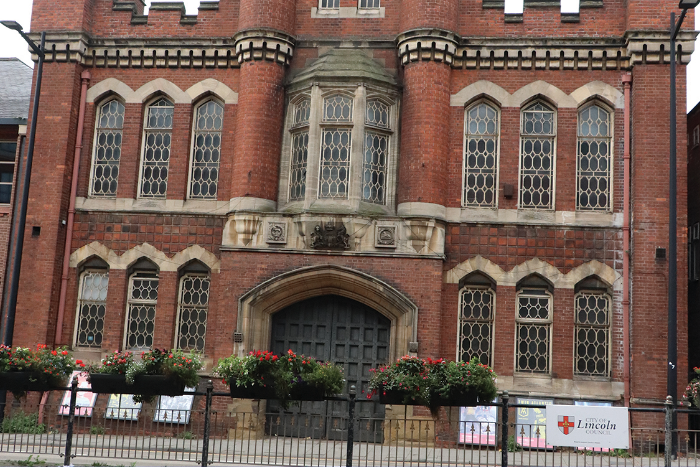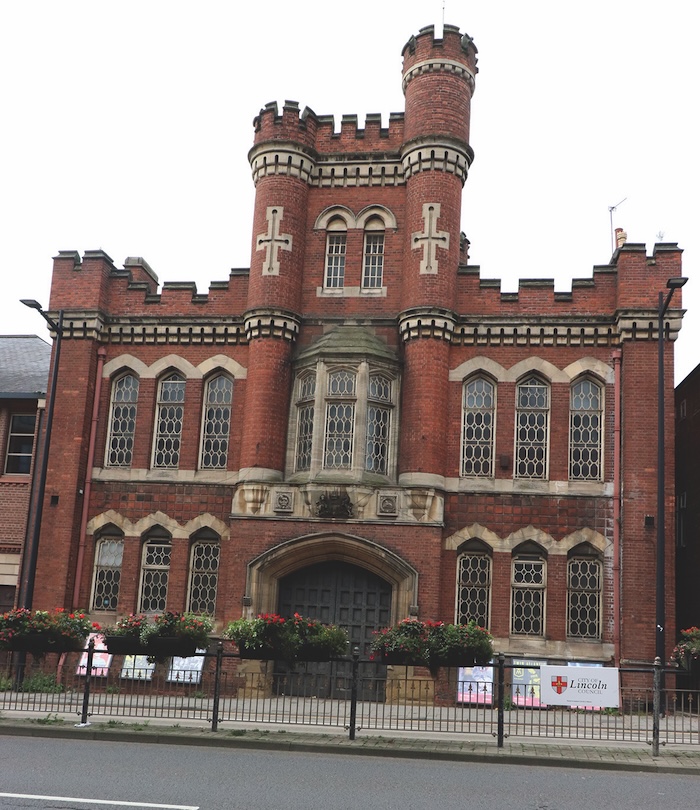
You know the Drill
The Survey of Lincoln’s Arthur Ward examines a building with a varied past.
Built on the Broadgate site of a former sawmill, the Drill Hall was completed in 1890, and paid for by Joseph Ruston (1835-97), the Lincoln-based engineer and industrialist.
At the time, the new Drill Hall not only provided accommodation for the Volunteer Battalion of the Lincolnshire Regiment, but Ruston had also installed a soup kitchen, fitted with coppers and every appliance for cooking food in copious quantities.
In 1893, a series of free ‘Robin Dinners’ began in the hall, serving up to 1,200 poor children at Christmas.
Today, given that the Drill Hall’s newly reconfigured entrance is away from Broadgate, on Free School Lane, little attention is paid to the original ornate frontage on Broadgate, which gives the appearance of a mock castle.
Built of red brick with stone dressing, the architectural style is Crenelated Gothic. There is a three-storey central tower with rounded corner turrets, and the tower to the right is raised higher, as if forming an observation tower.
Flanking this central ‘tower’ are symmetrical set-back wings of two storeys with square corner towers. The parapets are all crenelated, and below these is a band of carved stone, mimicking the machicolations (defensive floor openings) as found at castles like that at Tattershall.
Above the central Tudor arched doorway sits the Royal arms and regimental badges. Within this range was the Sergeants’ Mess, whilst behind sat the main single-storey Drill Hall itself. The hall now provides ‘bleacher’ seating for live theatre. The former oak-block floor, set on bitumen that provided for indoor ‘square bashing’, and pockmarked from former studded boots, is now lost.
Also within the original Drill Hall was a rifle range in the basement, an ammunition store and, in the two-storey north range, a gymnasium.
In the current reception space of ‘The Drill’, using part of what was the main drill hall, is a bar located in the former ammunition store, and café. Internally the gable wall carries a wreathed and corniced war memorial tablet designed by local architect Montague Ashley Hall (1887-1958) in 1920 to commemorate the fallen of the 4th Lincolnshire Territorials in First World War.
A second, timber ‘shield’ style memorial found in the basement during alterations has been restored and is also on display. Outside on the gable is the mask sculpture inviting in patrons to this reused building.
The building had a later life as a venue for bingo, wrestling, and other social gatherings.
Take time to look at the once main entrance and appreciate its architectural style and the royal coat of arms and regimental badges carved in stone that emblaze its façade and
give homage to its original use.
Think the bingo caller and tag wrestler once providing entertainment, as well as the students who took exams here, whilst you may be enjoying live music or a pantomime. Look out for the owl peering down on you from one of the arches above; or consider the memorial plaques and think of those who went to war and did not return. Think, too, of the poor and destitute children who enjoyed a free festive dinner in the hall at Christmas.
The Survey of Lincoln’s latest publication, ‘Learning in Lincoln’, which explores the history of many of the city’s schools and other education buildings, is available at Lindum Books, 4 Bailgate, and Steep Hill Bookshop, priced £9.50. More details can be found at The Survey of Lincoln’s website: www.thesurveyoflincoln.co.uk.

